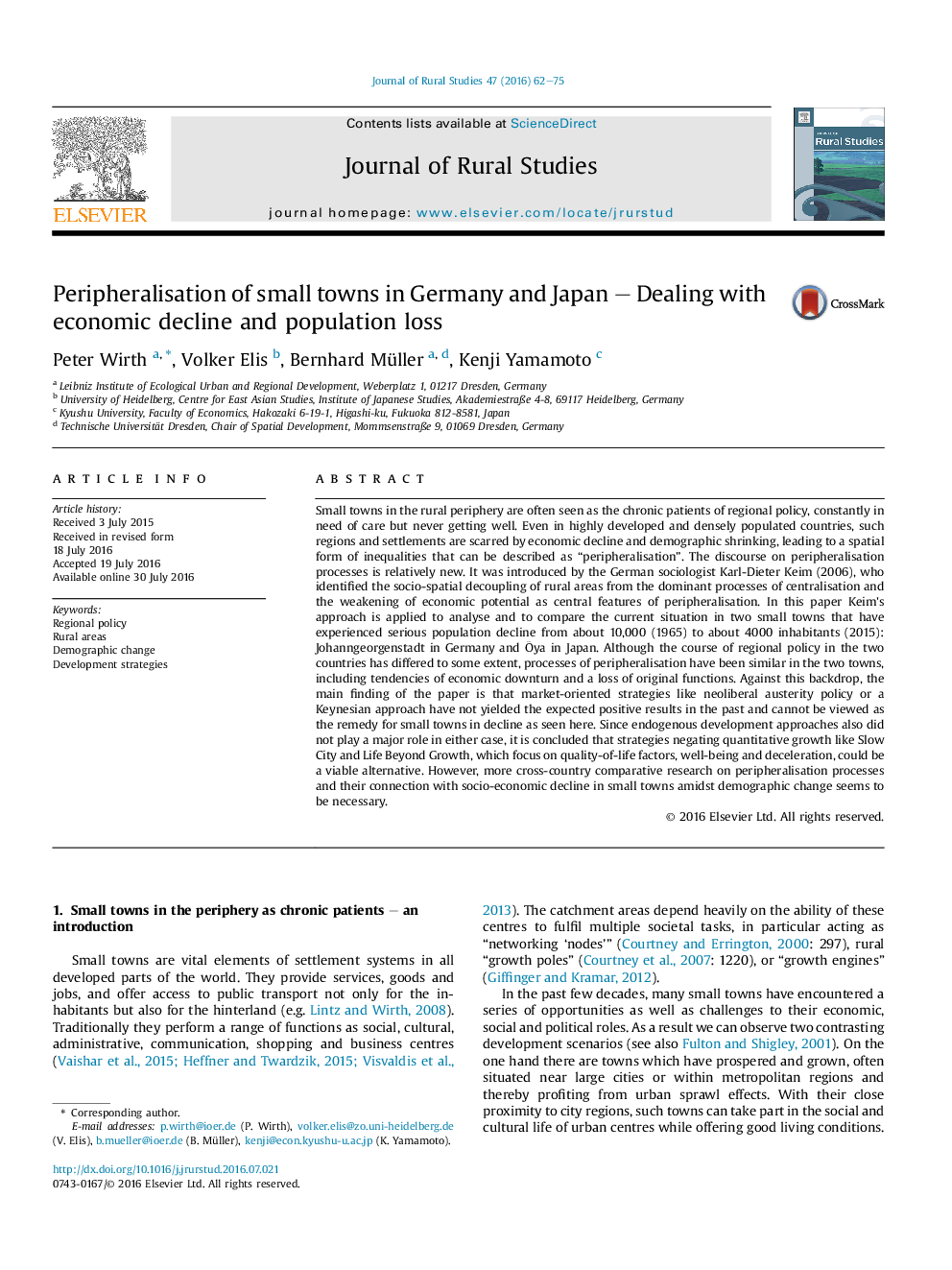| کد مقاله | کد نشریه | سال انتشار | مقاله انگلیسی | نسخه تمام متن |
|---|---|---|---|---|
| 6460230 | 1361825 | 2016 | 14 صفحه PDF | دانلود رایگان |
- Worldwide, many small towns have become the chronic patients of regional policy.
- The main causes are population loss and failed adjustment to structural change.
- Cases of rural shrinkage in Germany and Japan show highly similar characteristics.
- Market-oriented concepts of regional policy seem unsuited to resolving the problems.
- Approaches like Life Beyond Growth seem to be appropriate for small towns.
Small towns in the rural periphery are often seen as the chronic patients of regional policy, constantly in need of care but never getting well. Even in highly developed and densely populated countries, such regions and settlements are scarred by economic decline and demographic shrinking, leading to a spatial form of inequalities that can be described as “peripheralisation”. The discourse on peripheralisation processes is relatively new. It was introduced by the German sociologist Karl-Dieter Keim (2006), who identified the socio-spatial decoupling of rural areas from the dominant processes of centralisation and the weakening of economic potential as central features of peripheralisation. In this paper Keim's approach is applied to analyse and to compare the current situation in two small towns that have experienced serious population decline from about 10,000 (1965) to about 4000 inhabitants (2015): Johanngeorgenstadt in Germany and Åya in Japan. Although the course of regional policy in the two countries has differed to some extent, processes of peripheralisation have been similar in the two towns, including tendencies of economic downturn and a loss of original functions. Against this backdrop, the main finding of the paper is that market-oriented strategies like neoliberal austerity policy or a Keynesian approach have not yielded the expected positive results in the past and cannot be viewed as the remedy for small towns in decline as seen here. Since endogenous development approaches also did not play a major role in either case, it is concluded that strategies negating quantitative growth like Slow City and Life Beyond Growth, which focus on quality-of-life factors, well-being and deceleration, could be a viable alternative. However, more cross-country comparative research on peripheralisation processes and their connection with socio-economic decline in small towns amidst demographic change seems to be necessary.
Journal: Journal of Rural Studies - Volume 47, Part A, October 2016, Pages 62-75
